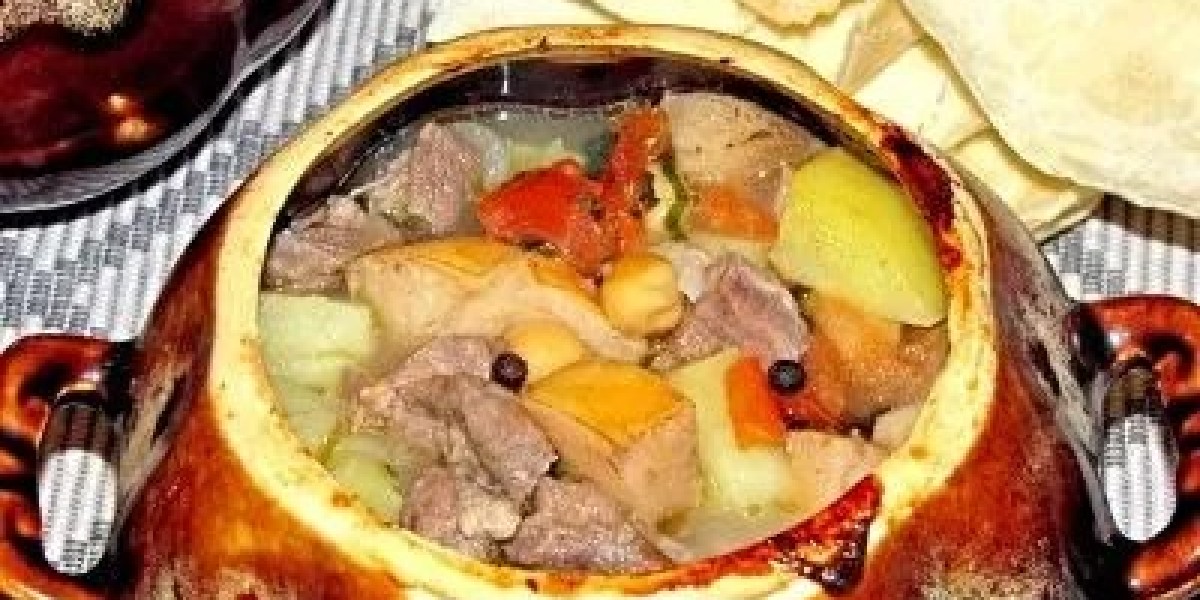Piti is a quintessential dish that reflects the warmth and hospitality of Azerbaijani cuisine. Its deep, aromatic flavors and rich, comforting texture make it a beloved part of traditional food culture. At its core, Piti combines tender meat and hearty legumes slowly cooked together in a special clay pot, creating an immersive culinary experience. Travel In Baku, with its dedication to showcasing local traditions, offers an in-depth look into how this iconic dish is made, breaking it down step-by-step from the choice of ingredients to the final presentation. For anyone curious about Azerbaijani cuisine, understanding the components of Piti is essential to appreciating the depth of this cultural staple.
The Central Role of Lamb: Choosing the Perfect Meat
In the traditional Piti recipe, lamb plays a starring role, providing a rich and flavorful foundation for the dish. The best cuts for Piti are often shoulder or neck, as they have the right balance of meat and connective tissue to become tender through slow cooking. Freshness is critical; high-quality, well-sourced lamb ensures the dish’s depth of flavor and succulence. The meat is typically cut into large chunks, which not only allows for even cooking but also makes for an impressive presentation when served. While lamb remains the traditional favorite, some variations include beef or even goat, depending on regional preferences or availability. Travel In Baku emphasizes sourcing good quality meat, ideally from local or trusted butchers, to truly capture the authentic taste that defines Piti.
The Magic of Chickpeas: From Dry to Tender
Chickpeas are an integral ingredient that adds body, creaminess, and subtle nuttiness to Piti. Dried chickpeas are soaked overnight to soften and reduce cooking time, which enhances their texture and flavor. During the slow cooking process, they absorb the aromatic broth, expanding and becoming melt-in-the-mouth tender. Fresh, quality chickpeas will yield the best results, and their inclusion balances the richness of the lamb. Chickpeas also serve as a hearty, nutritious component, making Piti a wholesome meal that sustains and warms. Their ability to absorb flavors and blend seamlessly with the meat and herbs is key to the dish's signature essence. Travel In Baku assists visitors in finding genuine chickpeas and offers tips on preparing them properly before adding them to the pot, ensuring a perfect outcome.
Layering Flavors: Herbs, Spices, and Vegetables
A pivotal part of making Piti lies in selecting the right herbs, spices, and vegetables to create a fragrant, balanced broth. Aromatic herbs such as dill, cilantro, and bay leaves are typically added to enhance flavor depth. Spices like saffron, coriander, and black pepper might be included to lend warmth and complexity. Vegetables such as potatoes, onions, and occasionally quince or dried apricots are layered into the pot, adding sweetness and contrasting textures. Experienced cooks understand that layering flavors gradually as the dish cooks intensifies its aromatic profile. The combination of herbs and vegetables not only enriches the broth but also helps to tenderize the meat and legumes. Travel In Baku highlights the importance of fresh herbs and quality spices, which are vital to recreating the authentic flavor of Piti.
Traditional Cooking in Clay Pots: Patience and Technique
The distinctive feature of Piti lies in its cooking vessel—a traditional clay pot called a "piti qazan." This porous cookware allows slow, even heat distribution and moist heat retention, essential for achieving the dish’s tender, melt-in-the-mouth quality. Once the ingredients are layered inside, the pot is sealed with dough or a tight-fitting lid, then slow-cooked over low heat for several hours. This gentle process allows the flavors to develop fully, transforming tough cuts of meat into luscious morsels and infusing the broth with aromatic herbs and spices. The craftsmanship surrounding the preparation of Piti in its traditional vessel is an art, emphasizing patience and respect for ancient techniques. Travel In Baku often offers insights into working with clay pots and suggests suitable modern alternatives for home cooks wanting an authentic experience.
Serving and Savoring: Sharing Azerbaijani Hospitality
Once cooked, Piti is served directly from the clay pot, maintaining its fragrant aroma and visual appeal. The broth is poured into small bowls so guests can enjoy the warm, flavorful liquid first, often accompanied by freshly baked Azerbaijani bread like tandir or lavash. The meat and vegetables are then scooped up and enjoyed together, with bread used as an edible utensil. A garnish of fresh herbs, a squeeze of lemon, or a sprinkle of sumac can brighten the flavors and add a refreshing touch. The communal way of serving and eating Piti exemplifies Azerbaijani hospitality, fostering bonds among family and friends.









